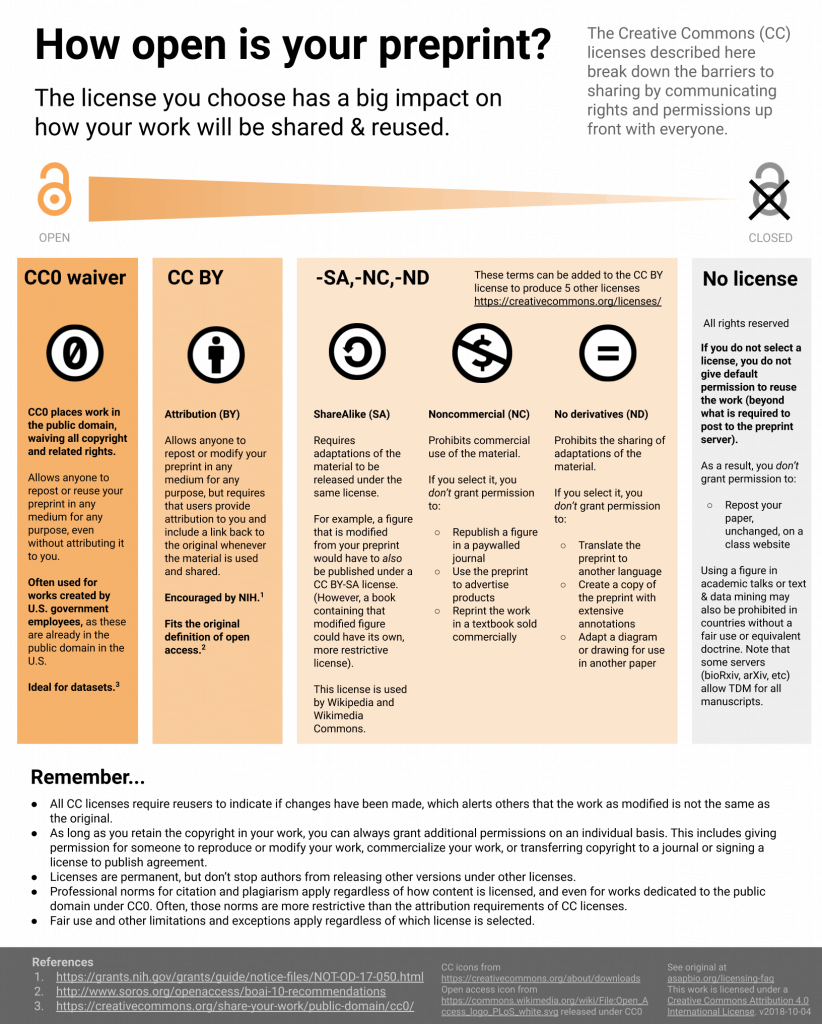Preprints provide a mechanism for rapidly communicating research. The Creative Commons (CC) licenses break down the traditional barriers to sharing by communicating explicit rights and permissions up front with anyone.
The default of copyright for all works is “all rights reserved.” This means that unless usage permissions are granted up front, anyone who encounters the work cannot be sure of what rights, if any, they have to use the material. In the face of uncertainty, this requires them to seek permission from the author before using the material. CC licenses offer a standard, “some rights reserved” approach, enabling an author to communicate to the public up front how they can use their works without violating copyright. Another benefit of using CC licenses (CC BY and its family of licenses) is that they all require that users provide attribution to the original author and include a link back to the original whenever the material is used and shared.
Creative Commons also offers CC0, a waiver that places work in the public domain and removes any and all copyright worldwide, for those authors not wishing to retain any control over their material. CC0 is used by some US government agencies, as their works are already in the public domain as a matter of U.S. copyright law and the laws of many (though not all) other countries. Therefore, when an employee of the US government indicates a work is CC0, the U.S. government is waiving copyrights it may have around the world (see further discussion at Project Open Data).
Releasing preprints under CC licenses has several benefits for authors. It removes the need to communicate with individual reusers, which reduces transaction costs for everyone, and eliminates headaches for authors who otherwise must deal with requests for reuse on a case-by-case basis. Furthermore, it increases the potential exposure for work by allowing it to be displayed or adapted in new contexts. (More on this in the “Derivatives” section).
However, CC licenses, just like any other public license and even some custom licenses, may complicate the analysis of view and download metrics, since articles may be reposted elsewhere and reusers are not obligated to return metrics information to the original preprint server. Furthermore, since CC licenses provide broad permission to reuse work, they reduce an author’s ability to take action against reuses they dislike compared with retaining all rights to an article.
The National Institutes of Health has encouraged the use of CC BY licenses on preprints for grantees, and several other funders encourage CC BY licenses for other work products.

